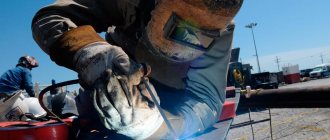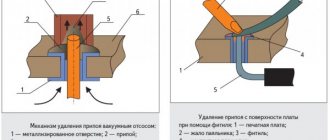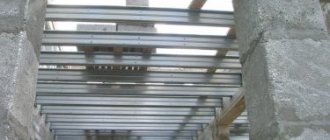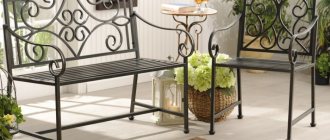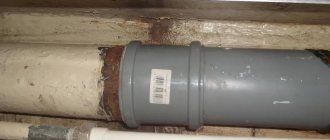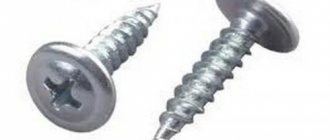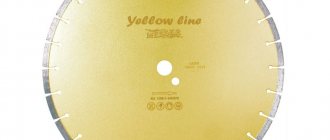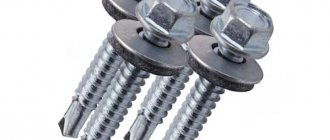A galvanized iron roof is durable, reliable and inexpensive, which is why it is very popular. It is worth noting that recently the demand for galvanizing is not what it used to be. Mainly due to the complexity of designing folded seams, as well as the unpresentable appearance.
More successful competitors, the main of which are metal tiles and corrugated sheets, are significantly superior to iron roofing in beauty, and in addition, they have a protective polymer coating.
However, due to the difference in price for roof installation, galvanization continues to remain competitive.
A little about the material
Sheets of galvanized iron can be of any size - height, width, thickness; they are easy to drill, cut and weigh a little, which makes installation much easier.
When installing a metal roof, elements such as ridges and valleys can be cut from existing iron, which will save money.
In light of increased attention to environmental protection, the environmental friendliness of the material is also important - it is well known that galvanized iron does not emit toxic gases and is not dangerous to nature and human health.
The affordable price, coupled with the above qualities, makes metal a very attractive option, and the sound of drops on the roof and the need for painting are relatively minor disadvantages.
Additional lightning protection
There is an opinion that the metal roof itself acts as a good lightning rod, and therefore does not require additional protection. But a direct lightning strike can cause a fire, as the metal installed on the wooden sheathing will overheat. If the seams between the coating elements are reliable, then lightning protection will be carried out by connecting it through a down conductor.
The construction of a metal roof can rightfully be called the most economical and simple way of arranging a country house. If you remember the technological rules when performing work and act carefully, then the erected structure will last for ten years without requiring repairs or any alterations from its owner. You just need to remember the installation rules according to building regulations and take into account the features of the metal coating.
Consumption of galvanized iron
If possible, you need to take material in accordance with the parameters of the roof - the entire width of the slope - this is better than connecting a strip of two or several pieces.
However, this option is not always suitable for transportation. To calculate iron consumption, we measure the roof and calculate its area.
For a double standing seam, multiply the resulting value by a factor of 1.5. If the roof is complex, then the coefficient may be higher.
We add 13 percent for waste.
If fastening will be done with self-tapping screws, then you need to calculate their number - per 1 sq. m requires 4 pieces, and with a large roof the amount is considerable.
Fastening elements must be galvanized and equipped with elastic gaskets for greater tightness.
How to repair a tin roof ↑
The essence of repairing such roofs is usually replacing old metal sheets with new ones. Even if a small area is damaged, significant areas of the roof will have to be replaced. When carrying out large volumes of repair work, roofers are faced with another problem - the disposal of old tin roofing. In addition, repairs are tied to the vagaries of the weather.
Innovative technologies based on the use of compositions such as Polykrov make it possible to carry out repairs without dismantling the old coating.
- The seams on a tin roof are tightly bent with a hand tool to the plane of the sheet.
- The surface is cleared of debris.
- On the folded folds, strips of fiberglass, burlap or other technical fabric of sufficient density (width from 15 to 20 cm) are glued onto mastic, for example, Polikrov M (140).
- Create a new insulating carpet by laying Polykrov AP roll insulation (150 or 130).
- If the length of the roof slope does not exceed the standard roll length, the covering is laid from top to bottom in one piece.
- If the area of damage is large, then the coating is laid in the direction of water flow, that is, along the fold line, but from the bottom up.
- The roof ridge is additionally glued with a strip of the same roll insulation.
- Finally, a protective layer of one-component varnish Polikrov-L is applied to the roof.
Roof covering technology
Galvanized iron sheets are suitable for roofs with a slope of more than 20 degrees.
Using a level, we check that the beams are laid horizontally. Roofing iron will “show” flaws in the rafter system in all its glory, so the rafters must be installed and secured with high quality. Then the sheathing is done and the outermost wind board is fixed.
The sheathing will suit:
- solid - from edged boards;
- sparse - in increments of no more than 20 cm.
Areas of cornices, roof overhangs, valleys - if present - require the installation of exclusively continuous flooring.
It is best to lay the iron covering on a layer of roofing felt.
Installation of iron sheets
Cutting and bending are inexpensive; you can contact a metal processing workshop.
When erecting a roof yourself, the iron is cut with electric shears or metal shears into sheets of the required length and width.
Finished metal sheets should be given the maximum possible evenness, getting rid of dents. The edges of the first sheet of the wind board are folded back to create a groove.
Next, you need to choose the installation method: using galvanized screws or rebated.
Self-tapping screws require drilling holes, which does not help improve the waterproofness of the roof; moreover, the sheets are attached with an overlap, so you need to purchase more material. As a result, this technology is not widely used.
Much more often, the seam method is used, which involves the creation of a special seam - a seam, with the help of which the sheets are fastened together.
And if you can cut metal without having any special skills, then you can’t do without them here.
High-quality folds are obtained using special electromechanical devices. The connection can also be made using hand tools.
To create a fold you will need:
- a table or workbench with a corner attached to the edge;
- steel hammers with flat side cheeks;
- wooden mallet;
- special comb bending device;
- ruler and caliper.
There are folds:
- recumbent - for transverse connections of sheets;
- standing – for longitudinal connections.
Bends can be:
- one – single fold;
- two – double fold. It is considered the most reliable and is used most often.
In order to make a connection, markings are first made.
The edge of the first sheet is bent upward using a comb bender; on the second sheet the same operation is repeated, with the only difference being that the height of the bend should be twice as large.
Then the seam is filled - the resulting ridge is just a standing seam.
The sheets are fastened to the sheathing using clamps - iron strips cut from leftover metal. The flooring is made parallel to the ridge, starting from the edge of the roof.
DIY metal roof: installation features
Seam roofing is a type of covering whose installation should be entrusted to professionals. And not for ordinary roofers, but for those teams who know how to work with seam metal roofing. This is due to many nuances, as well as the need for special equipment that will facilitate the installation process.
Today on the market you can find ready-made metal sheets with curved edges for rebates of a standard length of 2.5 m or more. After purchasing, all that remains is to connect them together. However, this method is not the best.
It is more preferable to purchase rolled galvanized steel, for example, copper or pural. At the site, you need to cut sheets of the required length, which would correspond to the length from the ridge to the eaves + 50-100 mm, which will be needed to create a rebate under the eaves overhang and in place of the ridge. You can quickly wrap the edges of the sheet on a special folding machine, and then use them for further joining.
Arrangement of sheathing and rafters for a metal roof
Arranging a truss structure for a metal roof is no different from traditional technology. Very often there is no point in installing rafters, since the roofing material is quite light.
As for the lathing, it must be done in increments of 200-250 mm from timber 50x100 mm or 50x50 mm. This frequency is required in order to prevent deformation of the roof metal during operation, installation and repair. The roofer's feet should step on the place where the sheathing is located, and the metal will not deform or sag.
For a flat roof, the sheathing must be made continuous. The ridge consists of two boards, whose two edges converge into one point. It’s better to make the cornice solid, from three or four boards knocked together.
Features of metal roof waterproofing
To minimize the formation and accumulation of condensation on the back side of the material, the roof must be waterproofed. If it is insulated, then a sheathing needs to be nailed onto the rafters, and a special waterproofing superdiffusion membrane is attached on top, which does not allow water to pass in, but at the same time releases steam from the inside. It should be secured from bottom to top. The joints must be made with an overlap of 100-150 mm and glued using construction tape. The film must be fastened with a slight slack so that in severe frosts it does not break due to strong narrowing and tension between the fastenings. At the same time, it can be secured with dowels with a wide head and self-tapping screws.
A counter-lattice is attached on top of the waterproofing membrane with the step indicated above. Thus, two ventilation gaps are formed: one between the waterproofing and the insulation, and the other between the roofing material and the waterproofing.
Fastening a metal roof
Installation of roofing iron always begins with the installation of crutches. They are attached to the cornice in 70 cm increments, they are responsible for holding the metal picture, otherwise they may fall during installation. Wooden crutches can be replaced with a metal corner 50-60 mm (attached along the eaves overhang). This method is even more convenient, since there is no need to align the crutches so that they are located exactly on the same line.
The first painting goes up with the finished folded edges. It is laid with the front so that an overhang of 40-50 mm is formed. It is necessary to align the sheet so that there is a 30 mm edge to cross the ridge (the edge on the opposite slope should be 60 mm).
On the side where the second sheet of metal is applied, clamps are attached. It is secured to the sheathing using a 4x50 mm self-tapping screw where it overlaps with a sheet of metal. As a result, it should look like this: the curved edge should be located next to the vertical edge of the clamp (they are fixed in increments of 500-600 mm).
A second picture is raised and placed next to the first. In this case, its folded edge should fit onto the folded edge of the first picture. In the event that the edges of the paintings are smooth and not self-latching, then the edges of the second and first paintings should be in close proximity (a clamp is clamped between them). Then, using roofing frames and other professional tools, a seam is made.
As a rule, this takes two passes with a hand tool, in both directions. Moreover, the clamp is also bent inside the fold, as a result of which the connection is as strong as possible.
Attention! If the house is operated near bodies of water or in a humid climate, then it is recommended to seal all connections using a metal roofing sealant (for example, Tytan sealant). It is much more convenient if you apply it to a strip of fiberglass, which will have a width corresponding to the width of the folded edge, and glue these strips to the metal before making the folded joint.
Kleimers are also nailed from the second edge of the second picture, after which the third picture is raised, and the entire production is repeated.
The wind side strip is attached where the paintings adjoin the gables, and then the upper side strip is attached. These elements can be attached either to seam joints (a rather labor-intensive process) or with self-tapping screws.
Once you have laid and secured all the paintings on both slopes, a ridge (ventilated or non-ventilated) is made. You can see how they are made in the photo. Also, pay attention to how the ridge ventilation can be done.
At the final stage, eaves overhangs are made and gutters are installed to drain rainwater. The edge of the picture turns down, allowing water to drain easily.
Operation of an iron roof
To extend the service life of the iron coating, it is necessary to paint it.
If painting is not being done for the first time, the previous layer is carefully removed, dirt is removed from the surface, it is also important to degrease the roof for better adhesion.
For coloring you can choose:
Mechanical damage negatively affects the effectiveness of the roof. Small holes and cracks can be soldered or a special sealant can be used.
Ice or icicles should be removed from the surface with caution.
The most vulnerable places where traces of corrosion most often appear are the folds. Every spring, it is advisable to inspect your roof for corrosion stains or other flaws.
If all operating rules are followed, an iron roof will last 20 years or more.
Methods for repairing an old roof from leaking
Local repair of metal roofing from leaks is carried out using two types of patches: along the width of the picture and intermediate ones. The first method eliminates defects on the plane, the second - in the ridges or near them. As a patch, sheets with the required margin for the size of the wear area are used (allowances are needed for connection). The damaged area is exposed and equipped with a patch, connecting it to the old coating. If flat slopes are being repaired, the connecting sections can be soldered.
Before installation, the patches are coated with drying oil, and after installation they are painted with a weather-resistant composition. In the same way, it is necessary to treat the connecting areas to avoid rusting. If the hole size does not exceed 200 mm, tarpaulin, burlap or thick fabric is used to make a patch. To seal a small hole up to 30 mm, use hot bitumen, red lead putty or special mastic. It is necessary to clean an area of 30-40 mm around the defect, followed by double-sided coating.
Patches made of fabric and burlap are impregnated with liquid oil paint, which contains natural drying oil with crushed lead or iron lead. The fabric must be well dried before impregnation. Impregnation time – 10-15 minutes. Next, the patch is wrung out and laid over the hole: smoothing and fixing is carried out with a stiff brush. Close attention is paid to the edges of the patch. The patches usually take about a week to dry, after which the entire roof surface can be painted. Repairs to gutters, overhangs, gutters and eaves are carried out much more frequently due to the greater vulnerability of these areas during snow and ice removal.
If defects account for most of the entire roof area, then it must be completely replaced. This procedure has the same algorithm of actions as laying new material. With the dismantled sheets, you can decorate the southern side of the slopes, after first cleaning, cutting and covering them with paint or drying oil. To design a valley, eaves overhang or other critical area of the roof, it is recommended to use only new metal sheets. Before crimping, all folds are treated with red lead putty.
Construction of houses
Finishing a roof with roofing iron is a rather complex process. The final result of the resulting coating directly depends on compliance with the material installation technology. We will consider further how to cover a roof with roofing iron with your own hands.
Table of contents:
Types, features and advantages of roofing iron on the roof
Roofing iron refers to materials for the manufacture of which rolled metal is used. There are a large number of forms of roofing iron:
Both polymer and galvanized coatings are applied to the metal surface, protecting it from external irritants.
The popularity of using roofing iron is explained primarily by its low cost and excellent performance characteristics. The production of certain types of iron is controlled by special documents, so the thickness of black roofing sheet material should not be less than 0.3 mm and more than 0.8 mm. To protect the metal from corrosion, it is treated with zinc on both sides.
In relation to the type of zinc coating of iron, it is:
- iron, the thickness of the zinc coating is up to eighteen microns;
- material, with a zinc coating thickness of up to forty necron.
Please note that the type of coating and its thickness directly determine the quality of the product; the thicker the layer of zinc applied to the surface, the longer the iron will be protected from corrosion.
For the production of roofing iron, high-quality carbon steel and cold pressing method are used. Galvanizing is done in different ways, and zinc of different categories is used. In order for the coating to adhere better to the surface, substances in the form of aluminum and lead are combined with zinc. Thus, the coating becomes more durable, smooth and, most importantly, not subject to corrosion.
Galvanization is the simplest and most reliable option that protects the metal from corrosion. To apply the layer, the previously prepared metal is immersed in a pre-molten zinc composition. Depending on the thickness of the resulting layer, the coating can be first-class or second-class. Material that belongs to the first class has a higher cost, but at the same time, its service life is more than 25 years. Second class material is cheaper, although it will serve its owner for no more than ten years.
In addition, roofing iron is coated with a combination of zinc, cerium, lanthanum and aluminum, a coating called galfan. The iron on which this coating is applied tolerates mechanical damage well, resists corrosion and is resistant to deformation.
How are the calculations done?
Before starting work, you will need to calculate the iron for the roof, that is, calculate the amount of material required. To do this, you will need to take full measurements of the roof, measuring the length and height of the slopes, as well as taking measurements of all superstructures that will need to be covered with iron.
It is important, in addition to the actual roof area, you need to take into account the dimensions of all canopies, overlaps and overhangs in the places where the drains are attached.
Advice! Before counting the iron for the roof, it is recommended to make an accurate drawing of the roof on graph paper, marking all the necessary dimensions on the diagram. Drawing up a detailed drawing will allow for more accurate calculations.
How to cover a roof with iron
- 1 Which type of roofing iron should I choose?
- 2 Stages of installation of a galvanized steel roof
- 3 Installation of corrugated sheets
- 4 Photos
- 5 Videos
The choice of roofing material takes into account the individual characteristics of the building: the angle of the roof, the solidity of the foundation, and the general architectural style. When choosing a finish, sheet metal is often preferred. This material guarantees the durability of the roof, is light in weight and does not weigh down the structure; processing and installation of metal is not difficult, which speeds up the entire process of installing the roof. In this article we will look at how to cover a roof with iron.
What's the result?
We are convinced that corrugated sheeting produced by the Metal Profile Company is a practical, modern material for roof cladding. We also examined the main criteria for choosing corrugated sheeting - now you can independently determine which material is optimal for your facility. It's not difficult, just follow our recommendations.
Let your roof be original, aesthetic and durable!
* Detailed information about warranty periods for products can be obtained on the website in the “Documents” section.
The categories mentioned in the article are:
Profiled sheet
What type of roofing iron should I choose?
Galvanized steel
Metal sheets intended for roofing work differ in appearance and coating.
- Black iron - sheets or rolled steel without coating, is resistant to mechanical stress, but does not tolerate moisture. This is a budget material, but for long-term operation it requires an anti-corrosion coating.
Old black metal roof
- Galvanized steel – has a smooth surface, is resistant to precipitation due to the protective layer of zinc, and is indispensable when installing a seam roof.
- Profiled metal is galvanized iron that has been profiled to create stiffeners. It has a trapezoidal, wavy or rectangular cross-section. After treatment with a polymer coating, the anti-corrosion and aesthetic properties of the material increase significantly.
Metal roofing material
Steel, aluminum and copper can be used as the main material for the production of seam roofing, corrugated sheeting and metal tiles. The first option has good characteristics depending on the selected coating, which is represented by the following options:
- zinc coating is an affordable option with a number of disadvantages;
- polymer coating is a more expensive material that is resistant to sunlight and weathering;
- aluminum and zinc coating - the composition is capable of restoring small cracks and is resistant to corrosion;
- titanium-zinc coating is the highest quality protective layer with a number of advantages and, accordingly, high cost;
- quartz coating – highly resistant to atmospheric and solar influences.
Also, metal roofing can be made from aluminum, which is known for its light weight and low load on the rafter system. Recommended for use in areas with high salt concentrations, which are known to stimulate corrosion.
One of the most expensive and at the same time high-quality materials for roofing production is copper. Among the advantages of copper are inertness to liquids, durability, and resistance to temperature changes.
The main feature of copper roofing material is that it acquires different shades depending on the chemical composition of atmospheric precipitation.
In any case, you should know that if the basic rules for using a metal roof are not followed, none of the types will last the period stated by the manufacturer. It is definitely not recommended to move in rough shoes, as they lead to damage to the coating and, accordingly, a decrease in service life. According to experts, it would be useful to conduct a regular visual inspection of the entire roof area and, if any defects exist, to eliminate them.
Stages of installation of a galvanized steel roof
Roofing made of galvanized steel
Before covering the roof with iron, it is necessary to make a strong sheathing that will prevent deflections of the metal. The basis for the iron sheets is wooden beams located 20 cm from each other, a continuous sheathing of edged boards or a step-by-step sheathing of boards nailed at a distance of 10 cm.
You can connect sheets with galvanized iron by laying them overlapping and securing them with nails with a special gasket, or in a more labor-intensive and reliable way - folding. To complete the work you need:
- wooden mallet;
- metal scissors;
- workbench for preparing paintings;
- metal hammer;
- comb bender;
- roulette;
- a mixture of drying oil and red lead.
Before starting work, iron sheets are primed with a mixture of drying oil and red lead to increase corrosion resistance. The dried iron is cut into pieces of the required size, using metal scissors (a grinder is strictly prohibited). The seam method reliably protects the joints from leakage. It is a connection of adjacent sheets of iron into a lock, made by bending the edge.
Types of recumbent seam connections
For horizontal connections, recumbent seams are made. They are made using special machines or on workbenches using a hammer and mallet. Draw a line at the edge of the sheet and bend the edge using a mallet; for this work you will need a workbench with a metal corner. On another sheet, the edge is bent several times until a U-shape is created. The joint is sealed and bent close to the metal sheet. In this way, blanks are formed for laying on the roof; they are called pictures.
On the roof, all the paintings are connected using longitudinal standing seams. In their manufacture, a comb bender is used. Before fastening, the position of the sheets in the vertical plane is checked. It is recommended that the length of the workpiece be equal to the size of the roof slope. The paintings are laid in rows from the ridge to the gutter. A steel strip is used to seal the lying seams.
In places that require special strength of the seams, a double fold is used. It is made by folding the edges of two sheets, followed by simultaneous folding. The rebated seam is installed with a bend towards the eaves, this allows water to flow freely along the roof. The paintings are attached to the sheathing with metal clamps.
Collar for the chimney tube
The most difficult stage is the installation of a collar for the chimney tube. It is pre-made according to the shape and size of the pipe. The collar is connected to metal sheets by standing seams.
To understand how to properly install a roof using a seam joint, you should watch a video with recommendations from professionals.
Features of roofing with profiled sheets
- When deciding on the size of the corrugated sheet, choose one that is equal in length to the roof slope; if it is large, focus on ease of transportation.
- When counting the number of sheets, take into account the angle of the roof; if it is within 15 to 30 degrees, an overlap of up to 20 cm will be required.
- Before installing the corrugated sheet, a waterproofing film is laid. It is attached with brackets to the rafters. Counter slats are installed on top of it, providing clearance with the metal sheets.
- The polymer coating of the corrugated sheets should not be damaged during transportation and installation; this will lead to the loss of the anti-corrosion properties of the material.
Brands of corrugated sheets differ in strength and wave height. To install a reliable roof, two brands are used:
- NS - for roofs with a significant slope angle that do not experience high loads;
- N - used for permanent roofing, characterized by additional stiffening ribs.
What do the letters and numbers mean in the marking of corrugated roofing sheets?
The letter means the functional purpose of the corrugated sheet: “N” - load-bearing, “S” - wall (with the exception of the “MP” marking: these are the initials of the manufacturer, Metal Profile Company). The “K” (roofing) marking does not exist. A logical question arises: is corrugated wall sheeting suitable for the roof? - Yes, it will do. To install the roof, you can use wall and load-bearing materials (we will discuss the selection rules below).
The number is the height of the profile in millimeters: S-21 - 21 mm, MP-35 - 35 mm, etc. The higher the profile, the stiffer the profiled sheet. Also, the profile height affects the useful width of the corrugated sheet. All profiled sheets are made from standard blanks with a width of 1250 mm. When a steel sheet is given the required shape, part of the material “goes” into waves and additional stiffening ribs. Accordingly, the higher the waves and the more stiffening ribs, the smaller the width of the finished material.
Installation of corrugated sheets
Installation of corrugated sheets on the roof
Corrugated sheets are easy to process; for installation and fastening you will need a hacksaw and a screwdriver. Lay the sheets from bottom to top, starting from the right end. Solid profiled sheets are pre-fixed with one self-tapping screw and laid along the entire length of the roof. After alignment along the eaves, final fastening is carried out using roofing screws, the heads of which are selected according to the color of the polymer coating. They are screwed horizontally with a screwdriver into every second wave, vertically at the distance of the sheathing step. The upper and lower parts are secured with a self-tapping screw into each profile.
When using several rows of corrugated sheeting, their transverse joints are connected with an overlap of at least 20 cm and coated with silicone sealant.
When working with profiled iron, care should be taken to prevent damage during movement. It is recommended to wear soft shoes or make a wooden deck on the finished roof area.
Metal roof A
properly installed iron roof will provide reliable protection for many years; this high-quality coating will withstand the influence of precipitation and wind. The shiny or colored surface of the metal sheets used will complement the architecture of the building.
Snow guards on seam roofing
Installation of seam roofing
Steep roof slope
Copper roofing
Corrugated roofing - practical advice on choosing
- appearance of the profiled sheet . This is the easiest way to determine which roofing sheeting is better. Of course, one that does not have defects, chips, peeling or paint sagging, “stretch marks”, etc.;
- clear geometry of the dimensions of the roofing corrugated sheet . The manufacturer is obliged to provide the opportunity to measure each profiled sheet in thickness, length and width. Deviations greater than the minimum acceptable (according to GOST 24045-2010) are a sign of a violation of the manufacturing technology. Even knowing how to properly attach corrugated sheets to the roof, it will not be possible to efficiently install obviously defective sheets (substandard);
- geometry of the overlapping wave . The first wave of the top sheet should very accurately cover the last wave of the bottom sheet. In this case, the likelihood of water getting under the sheet will be minimized;
- edge quality . Chopping (cutting) corrugated sheets in the factory is carried out with a special device - a guillotine. This cut is very accurate and smooth (without nicks or paint sagging). This is an indicator that the sheet will not begin to rust from the edge;
- strength of roofing corrugated sheets . When demonstrating the color scheme, the seller will most likely show you a selection of round swatches. This shape was not chosen by chance; a round sample is more difficult to bend than a square one. Therefore, the sheet appears durable.
In practice, you can check the strength of a corrugated sheet in a simple way by applying a little force: with slight bending, the corrugated sheet will easily return to its previous shape, but with strong pressure, the bend will remain.
- Availability of specifications and layout of corrugated sheets . This does not apply to the choice of corrugated sheet directly, but it is mandatory when purchasing material for the entire roof. After all, you need to not only know how to choose corrugated sheeting for the roof, but in what order the purchased sheets should be placed, especially in the case of a roof with a complex configuration;
- packaging of corrugated sheets . Its presence is important only at the stage of storage and transportation. It must be removed before installation. After prolonged exposure to ultraviolet radiation on the protective film on the corrugated sheet, it cannot be removed and significantly spoils the appearance of the roof;
- guarantees and certificates for professional sheets . Allows you to judge the reliability and responsibility of the supplier.
Galvanized roof: advantages, disadvantages and installation technology
For centuries, people have been concerned with the question of how to cover the roof of a house in order to turn it into a reliable fortress that protects from atmospheric disturbances. If at first natural materials were used, for example, straw, moss, reeds, and ceramics in various forms, then later a more reliable coating appeared in the arsenal of builders - metal.
Although the building materials market has changed very quickly, even today, galvanized steel roofing is considered the most practical, durable and reliable solution. In this article we will talk about what types of coatings based on galvanized steel there are, how they differ, what their advantages and disadvantages are, and how they are installed.
Advantages of metal profile sheets
To properly cover the roof of your own home, appreciate the advantages of metal with profiling. A good profiled sheet has the following characteristics:
- Environmentally friendly - production was carried out using non-toxic materials;
- Rich colors, allowing you to use the material that is needed to create a harmonious architectural ensemble;
- Variable price range, thanks to which owners can choose the optimal type of sheets with profiling;
- The standard length of the layer is 20 m. It is enough to cover the roofing surface with any slope without forming joints.
- The ease of installing corrugated sheeting on your roof yourself, which can be done by two people.
If the owners know how to choose high-quality sheets with profiling, they will ensure long-term operation of the house and comfortable living in it.
Types of galvanized roofing
Galvanized steel is often used in private, commercial and industrial housing construction as a roofing material. This coating is distinguished by its affordable price, fairly light weight, long service life, and high reliability.
If previously roofers had at their disposal only sheets of rolled steel, which were joined using a seam method to create a sealed layer, now the choice of materials based on this metal is much wider. The most common derivatives of roofing steel are:
- Roofing steel . This material is a roll of rolled galvanized steel, from which roofing pictures of the required size are made. The paintings will be connected to each other using a fold joint, that is, the edges of the large fold are folded over the small one using a sheet bender. This technology allows for a strong, durable coating, in which, if necessary, it is very easy to repair individual panels. In addition, seam joining of sheets reduces material consumption and reduces the number of horizontal seams.
Note! Over time, metal manufacturers are expanding the range of steel roofing coverings. Galvanized iron for the roof can be in the form of bitumen tiles, that is, metal tiles coated with bitumen, or modular metal tiles, that is, sheets with a small cross-section.
Types of metal coatings
People have been using metal as a roofing material for a long time, and over the centuries of its use, many technological options have been invented. Instead of simple aluminum, sheet iron and copper, they now use original “constructors” with a set of fasteners, elements and additional parts for arranging connections . Such kits greatly simplify construction work.
The classification of roofing iron divided the metal options for the roof into the following groups:
- Rolled, thin sheet or cold rolled, galvanized or black steel. Typically used for the construction of standing seam budget roofs.
- Metal tiles, completely ready for installation. It attracts attention with an abundant range of modifications of various shapes of elements and colors. Along with this option, corrugated sheeting also has similar priorities.
- Non-ferrous metals. This group includes popular coatings made of aluminum, titanium-zinc alloy, and copper.
Let's start by identifying which roofing materials are included in the “metal” category.
- Corrugated sheet
. - Metal tiles
. - Sheet or coiled
iron, aluminum, copper and stainless steel.
Therefore, we will look at each type separately and define each of them in terms of positive and negative characteristics.
Roof sheeting
Profiled sheets on the market are represented by three markings:
- “ C
” – wall; - “ N
” – load-bearing; - “ NS
” – load-bearing wall.
There is a marking “MP”, which means that the corrugated sheet is covered with a polymer layer.
Let’s make a reservation that all three types can be used to cover roofs; it’s just that wall ones are mainly used as roofing material for gazebos, terraces and verandas.
So, what can we say about profiled sheets? Here are their advantages:
- The length of the sheets
varies from 0.5 to 12 m in half-meter increments, which allows you to choose the size to cover the roof of the house without joints. The fewer joints on the roof, the less likely it is to leak somewhere. - Possibility of use on flat roofs
(with a slope angle of 3-5⁰). This only applies to continuous coverage. - Easy to install
. - Long-term service life
up to 25 years. - Variety
of colors.
As for the disadvantages:
- High sound transmission
, so in the interior of a building covered with corrugated sheets, you can clearly hear the drumming of rain or hail. - Metal has the highest thermal conductivity
, so roofs covered with profiled sheets are cold. Only properly carried out insulation can make the under-roof space warm. - On complex roofs, there is a high consumption of material
due to waste during trimming.
Advantages and disadvantages
Galvanized roofing is one of the most common types of roofing in private housing construction, but from the point of view of installation and operation technology it has its own characteristics. The disadvantages and advantages of metal-based coatings arise from the characteristics of the alloy used for their manufacture.
Experienced roofers note the following advantages of galvanizing:
- High strength . Materials based on galvanized steel are strong in themselves, and the additional stiffening ribs that they acquire during the molding process increase the load-bearing capacity of the coating. Therefore, galvanized roofs are characterized by high reliability even in regions with high snow loads.
- Affordable price . The cost of a galvanized steel roof is quite low. The price of one square meter of coating together with fasteners ranges from 500-1000 rubles.
- Corrosion resistance . Due to the zinc layer covering the steel, the material acquires unique anti-corrosion properties. By galvanic method, zinc is fixed on the surface of iron, so it does not come into contact with water.
- Durability . The service life of a galvanized steel roof is 30-50 years, since it is very difficult to damage mechanically. This indicator far exceeds the characteristics of even more expensive roofing coatings.
- A light weight . The weight of the coating is affected by the thickness of the sheet, but this figure is usually 4-10 kg/sq. m.
- Possibility of coloring . The appearance of a metal roof is easy to update, just remove the old paint with a steel brush and then apply a new coat of paint with a spray gun. The paint must be special.
Remember! Galvanized roofing sheet is considered one of the most practical materials, so it does not have many disadvantages. These include the low noise insulation ability of the material, which must be compensated for by additional sound insulation, as well as high thermal conductivity, which often leads to icing of the roof in winter without heating.
How to avoid mistakes in installation work ↑
The installation of a tin roof has its own nuances, knowing which you can ensure a long life of the roof. Let us note the most common mistakes when laying roofing sheets.
- The sheathing at an angle of inclination less than 14° is recommended to be continuous.
- To avoid water penetration through the connections, it is recommended to choose a vertical connector equipped with tabs. Water resistance is also increased by coating the seam locks with silicone sealant during crimping. If the length of the sheet metal exceeds 10 m, floating clamps are used.
- When installing metal floors, it is better not to use screws or bolts, since with rigid fastening, the absence of play will lead to deformation of the roof covering.
- The ventilation device is a crucial moment of installation work. The accumulation of condensate on the roof from the under-roof space will cause corrosion and, as a result, premature destruction of the metal. Therefore, roofing felt or roofing felt is laid under the covering. The roofing pie should have air vents that will ensure good ventilation under the roof. Special barriers and a vapor barrier layer limit the flow of warm air from the interior. It is also necessary to carefully check the mounting points, which are considered a possible source of warm air escaping.
- Roofing sheet is subject to thermal deformation. Constriction and expansion of the metal can be avoided by using appropriate connecting elements. The connection device has its own characteristics. If you limit yourself to pressing the metal apron tightly, this will not provide a proper connection, and water may still seep under the metal. Therefore, these elements are installed in niches or grooves.
- In addition, on almost all roofs there is a need to use tin products, say, drainage systems or metal aprons. Many of them can be made with your own hands.
Material quality criteria
A galvanized roof can serve as reliable protection from weather conditions and low temperatures. However, the performance characteristics and service life largely depend on the quality of the source material. When choosing galvanization for roofing work, pay attention to the following indicators:
- Sheet thickness . Coatings with a steel base thickness of 0.4-0.8 mm are available on sale. According to the experience of professional roofers, the thickness of the product should not be less than 0.6 mm.
- Metal content of the zinc layer . The metal content of the zinc layer of steel-based roofing materials should be above 275 g/m2. The higher this indicator, the more reliable the anti-corrosion coating.
- Type of coverage . Paint, a durable polymer, or artificial rubber can be used as an external coating for roofing steel. It is better to choose products with polymer or bitumen protection, as they are more resistant to external influences.
- Coating thickness . The thickness of the outer metal coating ranges from 1.5-3.5 mm. For the most popular materials this figure is 2.5 mm. The thicker the coating layer, the more reliably it protects the metal from scratches and damage.
- Cut protection . There are coatings in which the sections of the sheet are also protected from corrosion, like the entire surface of the material; their use is preferable.
Important! The marking usually indicates all the necessary information: steel thickness, sheet width and length in mm. The price depends on the size of the product, but experienced craftsmen recommend ordering sheets cut to the size of your roof so that there are no horizontal seams during installation.
What do you need to know about the price of profiled sheets?
When thinking about which corrugated sheeting is best for the roof, do not forget about its cost. When a metal profile sheet costs less than average, then they save on its production. Try to select products with average prices. Focusing only on price is the wrong approach to purchasing, because the prices include the type of metal, its thickness, coating, production technology, transportation costs and promotion of the supplier brand. Are you planning to install the roof yourself? Consider all recommendations for choosing and purchasing corrugated sheets. Be sure to study the slope of the roof, the climate of the region where you live - and you are guaranteed to know which corrugated sheeting will be ideal for your roof.
Roof design requirements
To install a galvanized steel roof, certain conditions must be met. There are different installation methods, however, they all must take into account the operational and technical characteristics of the material so that the coating is durable, airtight, and durable.
Professionals recommend observing the following requirements when performing installation work with your own hands:
- The roof slope must be at least 8 degrees. With a minimum slope, in order to obtain a sealed layer, it is necessary to carry out additional waterproofing, strengthen the rafter system with additional elements, and also increase the overlap between the sheets.
- The overlap between the metal sheets must be at least 1 profile wave. The lower the roof slope, the greater the overlap between the sheets.
- The roofing sheets are fastened to the sheathing using clamps; you can also use special self-tapping screws with a press washer or rubber O-rings.
- The sheathing pitch is calculated so that it coincides with the distance between the waves of the material. However, it should be taken into account that each sheet must be supported by at least three slats.
- You can install the coating yourself. Installation is usually performed starting from the bottom row, from right to left. If the dimensions of the galvanized sheet coincide with the dimensions of the roof, then laying is done in one row. The slope is aligned using the first sheet.
- When installing galvanized blood, it is mandatory to install overhangs, gutters and snow guards made of the same material.
Important! Chimney and ventilation pipes lead through the roof to the street. The most difficult place to install is their passage through the roofing. This area, which is vulnerable to leaks, must be additionally waterproofed.
Manufacturing of piece elements
For large flat slopes, it is better to order checkered roofing at the nearest factory for the production of metal tiles and corrugated sheets. However, for small objects such as gazebos, outbuildings and well houses, you can get carried away and make your own scales from available material. It could even be an ordinary galvanized sheet, but in the end the appearance will still be amazing.
Before purchasing material, you need to calculate its quantity. This is done by examining the element's unfolding. Its middle part, forming the covering, is the useful area, while the flanges and locks can be considered collateral losses. Having calculated the ratio of these two values on a separate element, you can approximate it to the total roof area, providing the necessary margin. It is also important to study which method of marking blanks on a sheet will result in the least amount of illicit scraps.
For example, you can take a flat and three-dimensional roofing block with workpiece dimensions of 300x300 mm. Initially, you need to mark and trim the workpieces. The development of a flat checker has the form of a square, on all sides of which marking lines are drawn with an indentation of 20 mm. Three corners of the workpiece are cut at 45°, the cutting line passes through the corner of the internal marking. The fourth corner has the form of a rectangular tongue 20x20mm, in the center of which a hole is cut. The tongue is formed by a cutout in the shape of a right triangle 20x20 mm, the legs of which run along the edge of the part and the tongue itself.
The development for a three-dimensional checker has a slightly more complex appearance. The corner with the tongue and the edges adjacent to it are marked in the manner described above. But the opposite corner looks different: there are two lines along the edges with an indentation of 20 and 40 mm. The initial cutting of the part is done with oblique lines that converge at the angle opposite the tongue. In this case, on the reverse side, the cutting line is connected to the edge of the indentation line of 20 mm. All three corners are cut at 45° to a width of 40 mm, while on the corner lying opposite the tongue, the edges are additionally trimmed so that in the widest part the wedge-shaped trims are not 4–5 mm wide. Also at this corner it is necessary to make a cut diagonally until the lines marking the indent of 40 mm converge, and then cut the cut along one of these lines.
The flat cup is bent along the 20 mm indentation lines. The edges adjacent to the tongue are bent outward at 180°, the remaining two are bent inward at the same angle. The edges adjacent to the tongue of the volumetric block are also bent outward at an angle of 180°. In this case, a double fold is performed on two opposite edges: first, the edges are folded inward at 90° along the 40 mm indentation lines remaining after marking, and then the edge is folded again at a right angle 20 mm from the cut line.
It is possible to make up to 100 elements of a checkerboard roof with only a mallet with a mandrel; the process can be speeded up using a manual edge bender. For larger volumes of work, a stationary sheet bender will not hurt, and it is desirable that the tool have an open corner. Professional roofers use corner benders to make such a covering; thus, by bending two edges in one installation and a system of stops, accurate dimensions and geometry are guaranteed.
Installation technology
The essence of the installation is to create a monolithic, airtight covering on the roof from sheets of roofing steel. Making aluminum with your own hands is quite simple, the main thing is to follow all aspects of the installation technology.
Those materials based on galvanization that have fixed dimensions, that is, corrugated sheets or metal tiles, are laid overlapping with spacing between the rows. Roll materials are connected with a seam connection. Before such work, it is important to understand what it is.
The roofing pictures have curved edges on the sides, which are needed to connect them together. You can bend the edges of paintings using a special machine or manually, which is naturally harder and takes longer.
The following types of seam joints exist:
- Single standing seam.
- Single fold fold.
- Double standing seam.
- Double folded fold.
Please note! It is much easier to lay galvanized corrugated roofing with your own hands, however, a seam roof provides the most reliable and durable coating, which, given the high quality of the original metal, can last hundreds of years, as evidenced by the seam roofs of ancient Russian churches and palaces. To simplify the installation process, you can use a self-latching seam roof, but it costs more than a regular one.
Roofing tin: preparation of sheets and installation of pictures
The main task of roofing material is to protect other building structures (rafter system, insulation, etc.) from the effects of external factors (snow, wind, rain, sun, dirt).
Roofing sheet copes with this task perfectly, and its service life is not short. If you want to cover the roof of your house with this particular material, read the article. What is a tin roof? This is a roof covered with sheet steel 0.5-1 mm thick, installation is carried out using a seam connection (bending the edges). There are two types of tin:
- Zinc coated (galvanized steel). Service life 25-30 years.
- Uncoated (black steel). Service life 20-25 years.
I would like to note right away that this type of roofing is more expensive than coverings made of soft materials (flexible roofing, roll roofing). In addition, you will need constant maintenance (cleaning, painting), and it is better to entrust installation to specialists.
Despite this, this material is in demand. In addition, it also has advantages:
- Ease;
- Incombustibility;
- Versatility (used for roofs of varying complexity);
- Waterproof;
- Durability.
But if your metal roofing has small volumes and its configuration is not very complicated, then you can try to do all the work yourself.
Use for repair of rolled materials
A cheaper option for repairing a metal roof is to use roll materials.
In this case, observe the following procedure:
- Sheathing repair.
- Restoration of drainage elements, gutters and slopes.
- Fixing swollen and torn fragments with nails.
- Cleaning the roof with a wire brush.
- Laying rolled material in the longitudinal and transverse direction to the standing folds.
- Padding on both sides of triangular slats of the same height with folds.
- Laying hot bitumen and gluing roofing felt.
The procedure is carried out from the cornice to the ridge: each next row should have an overlap of 8 cm on the previous one. To make it easier to lay the transverse strips, the standing seams are folded toward the roof plane.
Using "Polykrov"
Major repairs of an iron roof can be carried out using a polymer coating: in this case, it is not necessary to remove the old finish.
“Polykrova” contains polymer and bulk components:
- Reinforced fiberglass fabric on a roll basis "Polikrov - AR".
- Mastic “Polikrov – M”, for fixing the material to the base.
- Self-leveling coating “Polikrov-L”, laid in several layers.
The rolled base is quite easy to lay and glue, and the self-leveling base contributes to the appearance of a monolithic film. “Polykrov” is offered for sale in a rich variety of colors. The most popular color is silver: its reflective characteristics ensure that the coating remains clean and new for a long time after installation. During operation, the lower rolled base of “Polikrova” is reliably protected by a top layer, which can be updated if necessary.
Strengths include the following:
- Possibility of laying on the previous coating.
- After repair, the parameters of the updated roof increase noticeably.
- Laying does not lead to significant weighting of the roof.
- An almost waste-free method (the residues are used to insulate the abutments and joints).
Algorithm for laying the polymer roll composition “Polykrov”:
- Bending folds.
- Cleaning the base from debris.
- Applying mastic for gluing fiberglass or burlap. The width of the stripes is 15-20 cm.
- Installation of insulating material and "Polykrov".
- To finish the ridge, use strips “Polikrov-AR-130” or “Polikrov-AR-150”.
- The roof surface is varnished with “Polikrov-L-1”.
If the roof can be covered with one strip (20-22 m), a continuous installation from the ridge to the overhang is chosen for the covering. Repair of an old roof of a large area begins from the bottom.
- Operating temperature range – from -60 to +140 degrees.
- The rolls contain 20 m2 of material, with a width of 90 cm and a thickness of 2 mm.
- Mastic is packaged in barrels or cans of 20-200 liters.
- Service life – 25 years.
The most vulnerable areas of a metal roof are the joints. If there are violations of the temperature and humidity conditions, then these can also include the gaps between the sheathing bars, along the attic side. This is explained by the fact that non-galvanized steel nails, bolts and other fasteners at the points of connection with galvanized sheets form a destructive electrical couple. To prevent such phenomena, it is recommended to use roofing felt pads.
Profile dimensions and roof quality
The roof provides comfort to the entire house. When selecting its coverage, you cannot make mistakes. What is meant by the correct choice of roofing material:
- the size of the profiled sheet for the roof ensures a minimum number of transverse and lateral joints;
- the weight of the sheets does not create additional load requiring reinforcement of the foundation;
- the type of corrugation corresponds to the type of sheathing and the shape of the roof;
- technical and operational characteristics of the profile are optimal for climate conditions and expected roof loads;
- the appearance of the coating fits organically into the design of the building and the overall ensemble of the site.
All these points are satisfied by a roof made of corrugated sheets. This roofing material is characterized by the following qualities:
- light weight;
- decorative, at the same time, protective outer coating of metal profiles;
- ease of installation and the ability to carry out patch repairs;
- wide selection of sizes and colors.
Corrugated sheets come in different colors and sizesSource wapand.sayt.im
The quality and thickness of the steel sheet from which the corrugated sheet is made
The strength of the entire structure depends on the thickness of the sheet. The vertical position of the corrugated sheet in the structure determines the direction of the loads at the points of attachment to the bracket. If the metal thickness is below 0.45 mm, it can simply deform under the influence of wind and break through holes for screws or rivets. It is worth noting that this refers to the thickness of a galvanized sheet without a polymer coating, since with an applied coating it will always be greater. If the fence is expected to be used for a long time, then a sheet thickness of less than 0.45 mm is unacceptable.
Corrugated sheeting with a thickness of 0.3 - 0.35 mm. has very low elasticity and will deform under slight wind loads or mechanical shocks. It is quite difficult to check the thickness of a material with an accuracy of 0.01 mm, even armed with a micrometer. We have to rely on the integrity of the manufacturers.
In order not to have difficulty choosing which profiled sheet is best for a fence from all the proposed options, try to find or order metal from Europe. As a rule, leading manufacturers of well-known brands do not deceive both in thickness and in the form of external coating. Most factories label their products and determining quality is not difficult.
You have to expect surprises if you buy cheap corrugated sheeting from China (although they also make very good metal) or material of unknown origin.
Where can corrugated sheets be used?
- During the construction of fences, both permanent and temporary, for the purpose of carrying out repair work.
- To create parking lots and parking lots for cars or sheds at places of sale of products.
- When permanent formwork is made during the construction process.
- To make sandwich panels using special European technology for arranging wall coverings.
Profiled sheets are used as insulation for facades of various types of premises:
- industrial;
- residential;
- commercial;
- for making roofs on roofs of various buildings.
If you need to make floors in buildings, ceiling and wall partitions are created from corrugated sheets.
Photo of a roof made of corrugated sheets
